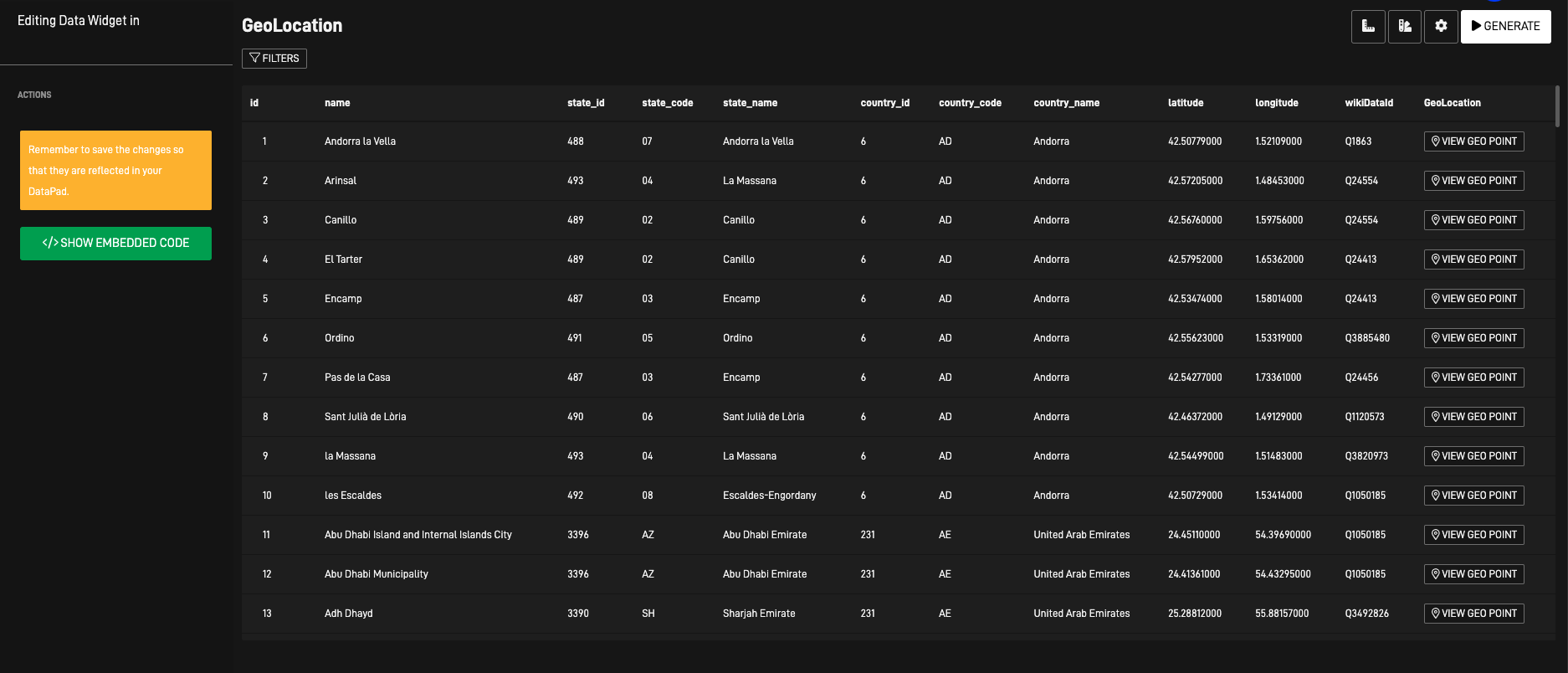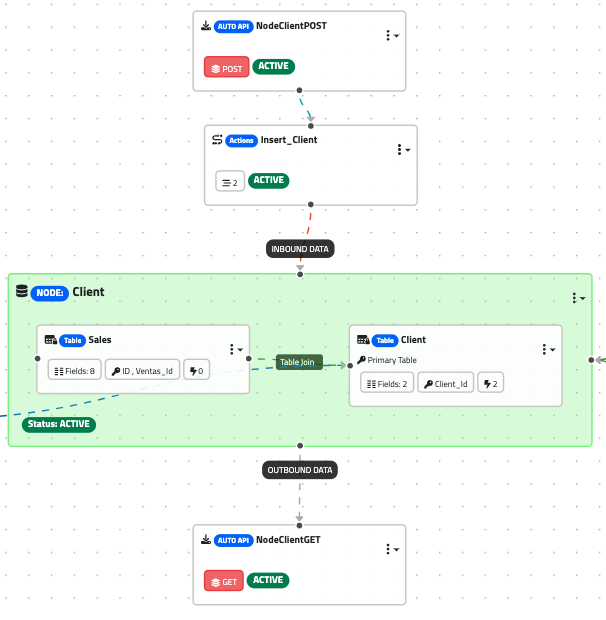Data Output and External Integration Layer (Real-Time Data Pipes and Virtual Tables)
Data Output and External Integration Layer in Arpia
The Data Output and External Integration Layer in Arpia supports real-time data output, enabling seamless integration with external systems. This layer includes Real-Time Data Pipes and Virtual Tables, which allow synchronized data flow between Arpia and external applications. By maintaining continuous data streaming and granting external systems access to insights generated within Arpia, this layer ensures data-driven decisions are actionable across all organizational systems—building a unified, intelligent data ecosystem.
Overview of the Data Output and External Integration Layer
This layer enables bidirectional data flow, meaning insights generated in Arpia can be pushed to external systems in real time, while incoming data from those systems can simultaneously feed back into Arpia for ongoing analysis. This dynamic exchange is achieved through:
- Real-Time Data Pipes: These channels support the continuous delivery of processed data, insights, and predictions from Arpia to other systems.
- Virtual Tables: These enable real-time access to Arpia’s analytics and Knowledge Grid from external applications—without data duplication.
Core Functionalities
1. Real-Time Data Pipes for Dynamic Data Output

- Real-Time Data Pipes provide streaming pathways to external systems, ensuring Arpia insights are immediately available in ERP, CRM, and operational dashboards.
- By establishing direct connections to external databases, applications, or IoT systems, Data Pipes enable synchronized operations such as inventory updates, customer profile changes, or real-time alerts based on predictive models.
2. Virtual Tables for External Data Access

- Virtual Tables offer a flexible mechanism to deliver data from Arpia’s Knowledge Grid directly into external applications. These act as virtual views of processed data, eliminating the need for complex ETL (Extract, Transform, Load) processes.
- Data can be updated in real time within the Knowledge Grid, ensuring external applications always access the most recent and relevant information—reducing latency and increasing operational efficiency.
3. Bidirectional API Integration for Continuous Data Synchronization

- This layer supports bidirectional API integration, maintaining a continuous data loop between Arpia and external systems. External applications can not only receive insights from Arpia but also push data back into the platform for further analysis.
- This is particularly valuable in real-time scenarios such as automated financial transactions, customer service actions, or inventory adjustments.
Key Benefits of Real-Time Data Pipes and Virtual Tables
-
Real-Time Operational Intelligence
- Stream AI-generated insights directly into operational systems, allowing organizations to respond instantly to evolving conditions—whether optimizing supply chains or personalizing customer interactions.
-
Seamless Data Access for External Applications
- Eliminate redundant data storage and extensive ETL work. Virtual Tables offer direct, on-demand access to Arpia’s Knowledge Grid from external tools.
- This enables consistent data distribution across departments and ensures insights are readily available where they’re most needed.
-
Unified Data Ecosystem with Continuous Synchronization
- Bidirectional data flows ensure up-to-date information across systems. CRM data, ERP transactions, and other external inputs enrich Arpia’s Knowledge Grid, aligning all analytics with the latest organizational context.
Integration with Other Arpia Layers
1. Knowledge Grid Layer Integration
- The Knowledge Grid serves as the centralized repository for structured, governed data. Real-Time Data Pipes and Virtual Tables draw from this source, ensuring external systems access only high-quality, organized information.
- Semantic search and AI-based structuring within the Knowledge Grid optimize the relevance of shared data.
2. DataApps Studio
- Applications built in DataApps Studio can use Virtual Tables to display real-time insights in dashboards or business intelligence tools.
- This enables frictionless delivery of Arpia’s AI insights into external operational workflows.
3. AutoAPI for Inbound and Outbound Synchronization
- AutoAPI manages seamless data flow both into and out of Arpia, enabling real-time data ingestion and synchronization.
- This ensures insights stay current and updates are applied automatically across connected systems.
Practical Use Cases for Real-Time Data Pipes and Virtual Tables
-
Real-Time Customer Personalization
- Push AI-powered insights from Arpia into CRM systems to personalize marketing campaigns or service experiences based on customer behavior and preferences.
-
Dynamic Supply Chain Adjustments
- Connect Arpia’s inventory and forecasting data with ERP platforms to enable agile production planning. Use Virtual Tables to track real-time inventory levels and optimize restocking.
-
Predictive Maintenance Alerts for IoT Systems
- Use Real-Time Data Pipes to stream predictive maintenance signals to IoT devices. Arpia ingests sensor data, processes predictive models, and triggers alerts or actions for maintenance scheduling.
Advantages of Real-Time Data Pipes and Virtual Tables
- Improved Decision-Making: Get immediate access to AI-generated insights to accelerate business decisions.
- Operational Efficiency: Reduce the time and complexity of acting on insights by embedding them directly into external applications.
- Scalability and Flexibility: Arpia can integrate with a broad range of systems and scale data flows to meet changing organizational needs.
The Data Output and External Integration Layer equips Arpia users to make real-time decisions by operationalizing AI across external systems. By enabling synchronized, bidirectional data flows, this layer ensures that insights are not just generated—but also acted upon—in the moment they’re needed.
Updated 9 months ago
